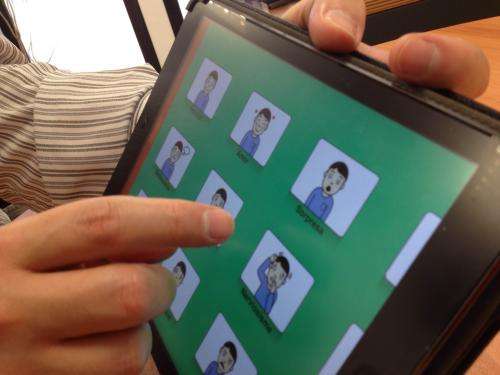Technology to help people with disabilities to learn and communicate

The Easy Communicator (ECO) application, which has been designed at the EPSEVG under the auspices of the UPC's Accessibility Chair, is aimed at children with autistic spectrum disorders, adolescents with cerebral palsy and senior citizens with cognitive problems. The purpose of the project is to help these people communicate and learn more easily. "The development focused on two aspects: firstly, programming the computer application, and secondly, defining the communication elements that the application uses," explains Daniel Guasch, the director of the UPC's Accessibility Chair and a professor at the Department of Network Engineering.
The application will be available for iOS and Android tablets, and a beta version is expected to be operational in December for the two systems. The Educational Psychology Advisory Service of the Garraf and the Marta Mata School in El Vendrell "will assess the shortcomings of the first version so that the Chair can fine-tune the application," says Daniel Guasch.
The Easy Communicator's communication elements combine photographs, pictograms, video, text and voice. Therefore, messages are available in alternative and complementary formats. "To indicate the concept of a school, for example, you can use a customised combination of a photograph of the user's school, a generic pictogram, a video of the word school in sign language, the spoken word or the text", adds the director of the Accessibility Chair. The application allows external resources and resources found by the user to be incorporated. According to Daniel Guasch, "the system takes into account collections of pictograms, voice and video, some of which are free to use, such as the resources available at the ARASAAC graphics portal, and other resources belonging to users themselves".
What distinguishes the ECO project from similar applications is its interaction with the user, as the application is conceived as a game. The open-source, free platform also allows users to create and share customised content in a flexible manner.
The ECO project team
The project is carried out by students and professors at the UPC following the service-learning methodology, i.e. the research aims to find solutions to real cases. The programming of the application involved students on the bachelor's degree in Informatics Engineering at the EPSEVG, while the definition and creation of the communication elements involved students on the bachelor's degree in Industrial Design and Product Development Engineering, also at the EPSEVG.
The project was supervised by professors from the departments of Network Engineering and Software. Users' experiences will be evaluated and the results will be validated by the Educational Psychology Advisory Service of the Garraf and the Marta Mata School in El Vendrell.
Provided by Universitat Politècnica de Catalunya



















